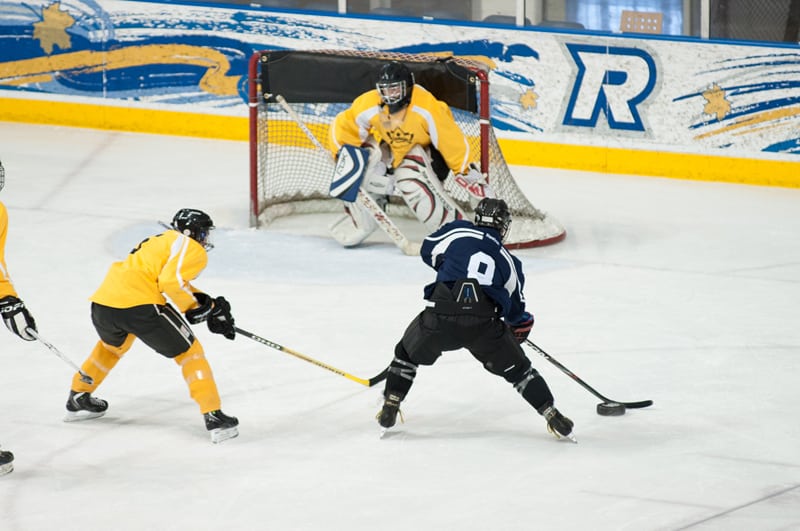
Blind hockey? Yes, really. Check out this eye-opener
Courage Canada Hockey for the Blind organizers are working hard to grow their game with an eye towards the 2026 Paralympics.
 Blind hockey? Yes, really. Check out this eye-opener
Blind hockey? Yes, really. Check out this eye-openerWhen Matt Morrow approaches the uninitiated about hockey for the blind, he typically gets the same reaction. “Hockey for the blind? Don’t the players keep crashing into each other and the boards?”
A quick perusal of some of the highlights from his organization’s showcase event is, pardon the pun, a true eye-opener. The players, who are all legally blind (between zero and 10 per cent vision) have terrific skills and moves.
Morrow – executive director for Courage Canada Hockey for the Blind – along with president Mark DeMontis (himself a blind athlete), have been working for years to build a network of players and support systems to help grow their sport. Their ultimate goal is to have it included in the Paralympics by 2026.
They took a step towards that dream when they staged a national event, with four teams, last February at the old Maple Leafs Gardens/Mattamy Athletic Centre in Toronto. They’re planning a bigger and better sequel at the same venue this March 21-23. Proceeds support Courage Canada's children and adult blind hockey programs.
The game is played with an oversized, hollow puck (5.5 inches in diameter) that has ball bearings on the inside. The puck, which moves more slowly than traditional rubber discs, loudly clangs as it glides to help players track its movements. Goals may only be scored in the bottom three feet of the net and one pass must be completed after the center red line before a team can attempt to score. In the accompanying video, the goalies are all essentially completely blind.
[embed]https://www.youtube.com/watch?v=QQ3NEsPj734[/embed]
Morrow explained that sometimes lines and defense pairings are arranged so that players’ sight capabilities complement one another. For example, a player who only has tunnel vision might be paired with a player who only has peripheral vision. Together, they can work as playmaker and finisher, sometimes seamlessly.
Of course, the greatest payoff is the joy the athletes experience by overcoming a significant challenge, playing an awesome sport and participating as part of a team – some for the first time in their lives.
Morrow is pumped at what has been accomplished so far and the possibilities.
“Interest has continued to skyrocket,” he says. “Teams in Ottawa and Vancouver have doubled in size. There’s an international program in New York and we’ve had interest from Finland, Sweden, Slovakia and Russia. We still have a long way to go, but I’m confident we’re on our way to an eventual world championship and the Paralympics.”


